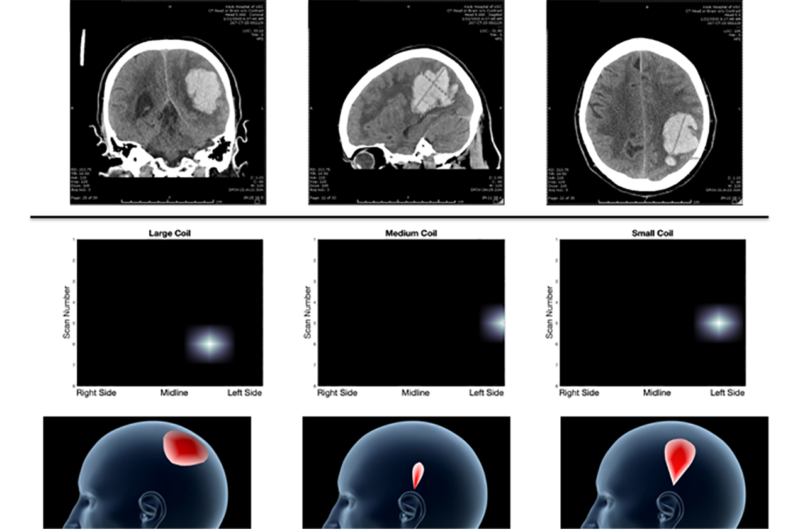
A team of physicians and researchers from USC and Caltech received funding to develop a portable, rapid and noninvasive imaging and detection device using eddy current damping sensors that can detect brain hemorrhages associated with stroke and TBI. (Image/Courtesy Gabriel Zada)
(Originally published at HSC News.)
By Melissa Masatani
For patients with strokes and traumatic injuries to the brain, a timely diagnosis is one of the most important factors associated with a good recovery. Current practices require a CT or MRI before beginning treatment, but a newly funded project from physicians and scientists at Keck Medicine of USC and Caltech could revolutionize rapid diagnosis and treatment for stroke and traumatic brain injury (TBI) patients.
A team of researchers led by Gabriel Zada, MD, MS, associate professor of neurological surgery (clinical scholar), a neurosurgeon at Keck Medicine and director of the USC Brain Tumor Center, was awarded a $2.5 million National Institutes of Health (NIH) and National Institute of Neurological Disorders and Stroke (NINDS) R01 grant for developing a noninvasive, handheld device to detect intracranial hemorrhage.
“For stroke patients, a major question is, is there bleeding in the brain? A CT scan or MRI can take several hours to obtain and interpret, or imagine you’re in a rural area where they have to fly you to an ER,” said Zada, professor of neurological surgery at the Keck School of Medicine of USC. “This device is portable and would be able to scan the patient’s head in the ER or field, and quickly tell if there is bleeding in the brain.”
The device uses technology developed at Caltech by Yu-Chong Tai, PhD, and adapted for use in patients by the team at USC, which also includes Nerses Sanossian, MD, director of the Roxanna Todd Hodges Stroke Program; Arthur Toga, PhD, director of the USC Mark and Mary Stevens Neuroimaging and Informatics Institute; and Shane Shahrestani, an MD/PhD candidate.
The portable, rapid and noninvasive imaging and detection device uses eddy current damping sensors that can detect brain hemorrhages associated with stroke and TBI. This could result in diagnosing, classifying and pinpointing the location of a hemorrhagic stroke or TBI in minutes, rather than hours. As a result, first responders and medical providers could make time-sensitive medical and surgical decisions sooner, which would improve treatment and recovery in these patients.
The grant will allow the team to further refine the device, test its ability to detect the depth and breadth of brain hemorrhage in patients, and develop algorithms to quickly and accurately classify brain lesions, as compared to CT and MRI scans.
“Our team is extremely grateful to be supported by the NIH to develop this promising technology that could change the way stroke and trauma patients are triaged and treated,” Zada said.